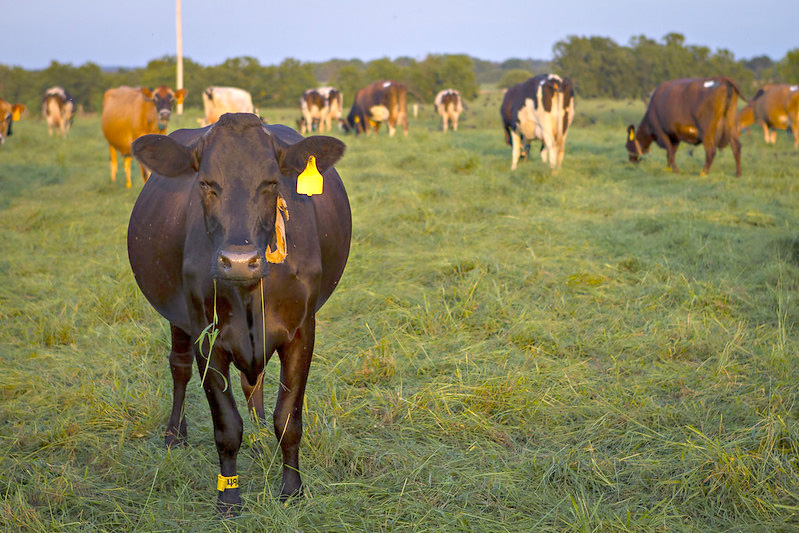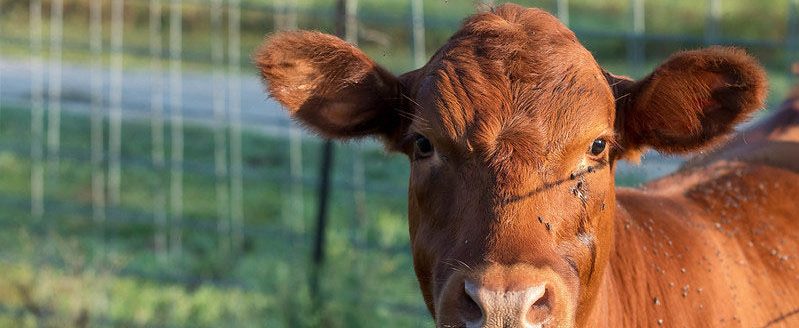“Warm weather brings on environmental factors that can lead to pink eye in cattle,” says Patrick Davis University of Missouri Extension livestock field specialist. Pink eye can lead to reduced cattle performance, which affects profitability.
“The main culprit bacteria that causes pink eye is Moraxella bovis,” says Davis. Face flies irritate the eye and transmit the bacteria causing pink eye. Therefore, face fly control will reduce pink eye incidence. Control methods include back rubbers, dust bags, insecticide products and oral larvicides. As fly populations increase, Davis suggests cattle producers implement the best fly control methods to reduce herd issues.
“Plant material and dust can irritate the eye and contribute to pink eye problems,” he says. During grazing of mature cool-season grasses, seed heads can irritate the eyes, leading to pink eye. A dry, dusty environment can also irritate the eyes Davis suggests cattle producers clip pastures to reduce seed heads, eye irritation and incidence of pink eye. Furthermore, this management strategy also resets those pastures, leading to regrowth of better-quality forage.
“Large-animal veterinarians can provide pink eye prevention and treatment strategies,” says Davis. Vaccines are available or can be developed with veterinarian help to reduce pink eye issues. Furthermore, if issues arise, veterinarians can help with treatment plans for the best possible outcome. Davis suggests working with a large-animal veterinarian to implement preventatively and/or treatment strategies to reduce issues.
For more information on management strategies to reduce cattle herd pink eye issues, contact your local MU Extension livestock field specialist.




